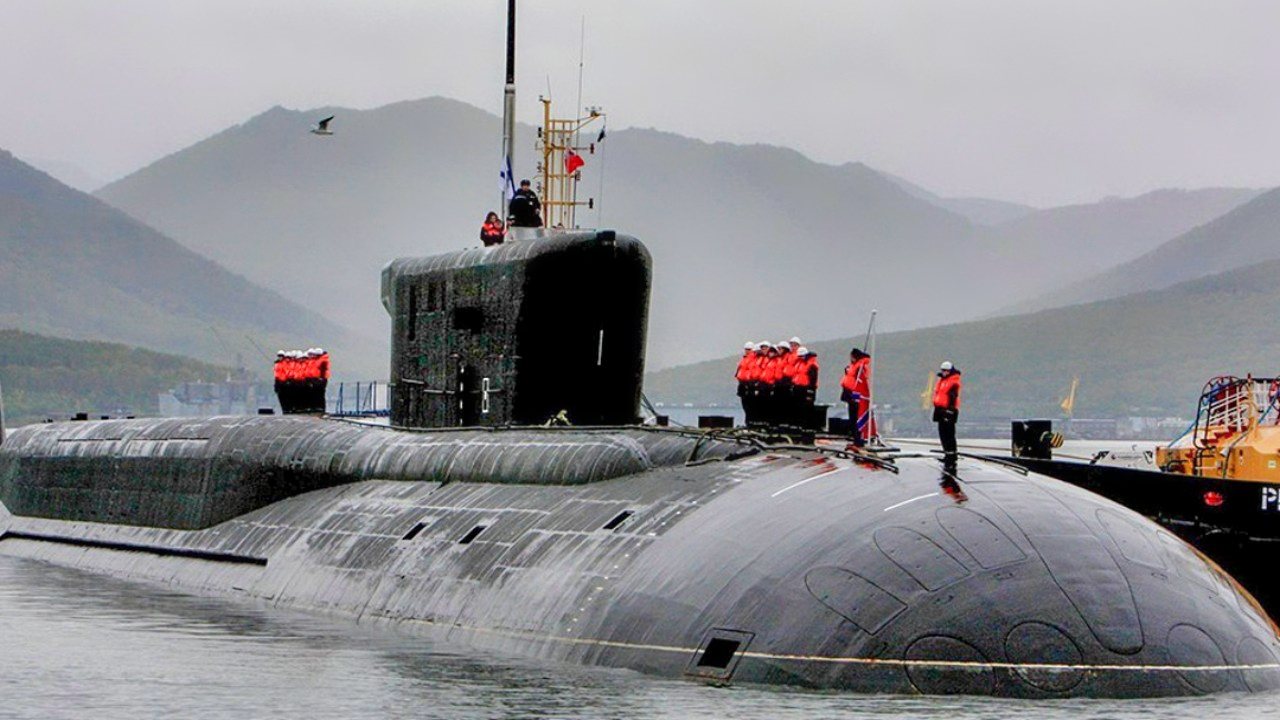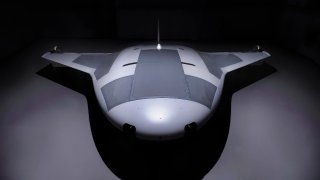Northrop Grumman's Manta Ray Could Change Undersea Warfare Forever
Northrop Grumman describes the new Manta Ray drone as: “A new class of UUV, it is an extra-large glider that will operate long-duration, long-range and payload-capable undersea missions without need for on-site human logistics.”
Summary: The Manta Ray, a new uncrewed underwater vehicle (UUV) developed by Northrop Grumman under DARPA's guidance, represents a significant innovation in deep-sea technology. Designed for prolonged autonomous operations without human logistic support, Manta Ray aims to perform complex undersea missions, including scientific research and military tasks.
-Featuring energy-harvesting capabilities and a unique design inspired by its namesake, the Manta Ray can operate at depths unreachable by traditional submersibles, marking a major step towards autonomous deep-sea exploration and surveillance.
-This UUV is poised to enhance maritime security, particularly in anti-submarine warfare, by leveraging advanced propulsion and stealth technologies.
Revolution Under the Sea: Northrop Grumman Unveils the Manta Ray Deep Sea Drone
On February 3, 2024 – just shy of two years after Russian forces invaded Ukraine, the Russian Navy rolled out its fifth modernized Borei-A Class nuclear ballistic missile submarine from the Sevmash shipyard in Severodvinsk, Northern Russia. This new class of undersea predator is alleged to be significantly stealthier than previous Russian submarine designs thanks to its use of pump-jet propulsion – a first for Russia. Russian media has claimed this new submarine is five times quieter than Russia’s latest nuclear-powered Akula-class submarines, and two times quieter than America’s Virginia-class attack submarines.
With at least two more Borei-A Class vessels already in production, it’s clear that, despite Russia’s military woes in Ukraine, the country remains heavily invested in maintaining and extending its potent nuclear strike capabilities, on which Russian President Vladimir Putin seems to increasingly rely to stave off direct Western interference with his military objectives.
But Russia’s undersea fleet may soon be facing a new kind of threat… one that lurks deeper than any of their submarines can sail, hibernating with nearly no detectable electromagnetic emissions, and capable of rapidly coming to life and soaring through the sea like an exotic predator combined with a stealth bomber, taking on submersible threats with a variety of potential payloads, before once again anchoring itself to the seabed to lay in wait once more.
On April 8, Northrop Grumman officially unveiled its new prototype deep sea drone, the Manta Ray uncrewed underwater vehicle (UUV). This new undersea drone is designed to conduct extended-duration autonomous operations at long ranges with minimal need for human support, according to the firm, making it uniquely suited for a wide variety of undersea scientific and potential combat operations.

Northrop Grumman describes the new Manta Ray drone as: “A new class of UUV, it is an extra-large glider that will operate long-duration, long-range and payload-capable undersea missions without need for on-site human logistics.”
While details about Manta Ray and its full range of intended capabilities remain sparse, we can glean some information about the goals informing this endeavor through the contracting documents and announcements released by the Defense Advanced Research Projects Agency, or DARPA, leading up to this point.
THE UNDERSEA PATH TO MANTA RAY
In March 2020, DARPA awarded developmental contracts to Lockheed Martin, Northrop Grumman, and Navatek to mature concepts for what DARPA Manta Ray Program Manager Dr. Kyle Woerner describes as “an autonomous underwater vehicle that’s out operating on its own, harvesting energy, and completing whatever mission it’s given.” By December 2021, the field narrowed to Northrop Grumman and Navatek (now known as Pacmar Technologies) with Phase 2 contracts awarded to each for the construction of full-scale technology demonstrators.
In September 2023, Pacmar Technologies’ Manta Ray sub-scale prototype began “splash testing,” meant to verify the forthcoming platform’s sensor suite and key autonomy behaviors for the full-scale platform. And now, Northrop Grumman has unveiled its own full-scale technology demonstrator, which, according to the company, is modular to support easy shipping for expeditionary deployments, and has the ability to anchor to the sea floor and hibernate for extended periods to reserve power.
Northrop Grumman’s Manta Ray design resembles its namesake fish, adopting a similar “sea-glider” shape.
Based on the Manta Ray program description, also penned by Dr. Woerner, the driving factor in this effort was to field a deep-sea drone that could specifically operate for long durations without the need for logistical support. While not specified in this language, the endeavor seems to prioritize both long-duration deep-sea operations and the force-multiplying effect of passing these roles off to a drone with minimal support requirements.
“If successful, this new class of UUV will give the combatant commander an amplification of capacity without disrupting current operations by remaining independent of manned vessels and ports once deployed,” Dr. Woerner wrote.
EXTENDED-DURATION OPERATIONS AT EXTREME DEPTHS
To minimize the logistical requirements of the drone, DARPA’s documentation calls for novel energy management and even energy-harvesting techniques for use in dea sea environments – or creative new ways to minimize energy draw and even to supplement energy stores using its environment – as well as a wide variety of new onboard systems designed to minimize power requirements, from propulsion to threat detection and beyond. A fourth company, Metron Inc, has also been contracted to mature technologies in that specific vein.
Another evident element of the Manta Ray program is to operate at extreme depths that would otherwise be impossible, or economically infeasible, for Navy or civilian submersibles.
“A main driver for wanting to go toward underwater vehicles in their ability to go to depths that humans and many human systems are not able to go to,” Dr. Woerner explained on the Voices from DARPA podcast in October 2022.
Woerner went on to explain that DARPA chose the name Manta Ray as it emphasized the program’s aim of fielding a disruptive submersible technology that departs from the sleek torpedo-like design that’s so common in military submarines, and instead leans into the efficient shapes of undersea life – like the large and exotic-looking Manta Ray fish. While Woerner clarified that DARPA was happy to accept designs that didn’t resemble the Manta Ray found in nature, Northrop Grumman seemed to take the idea to heart when designing its submersible.
MANTA RAY WILL HARVEST ELECTRICAL ENERGY FROM ITS ENVIRONMENT
To understand the value Manta Ray can provide, it’s first important to recognize the limitations inherent to current-state deep-submersible technology. Most of today’s uncrewed underwater vehicles (UUVs) are tethered directly to surface vessels for power and support, and the few that aren’t still need to keep support (usually in the form of a crewed ship on the surface) nearby because the systems can usually only operate for periods of hours, or in a few extreme cases, days.
“So you can either chase them around with a host vessel, which is expensive and takes a lot of time and requires humans above them – and you have to offer them care and feeding and everything else that comes with that – or you can find a way to extend endurance under the sea,” Dr. Woerner explained. “So, part of this project from a military utility perspective is reducing the burden, if you will, on these human-operated ships.”
The single most limiting factor for UUVs today is power storage. A large submersible requires a great deal of power for propulsion alone, before you even consider onboard control systems, sensor suites, and any potential payloads. A significant area of focus for Manta Ray, beyond designing systems with very low power requirements, is finding ways to draw power from the submersible’s operating environment.
“One of the things that’s really interesting about ocean resources is that they are persistent,” explains Kelley Ruehl, a research and development mechanical engineer with Sandia National Laboratories who specializes in wave-energy conversion, or deriving electrical energy from the power of ocean and river currents. But Ruehl, who is serving as an advisor on the Manta Ray effort, says there are several other potential avenues for power production under the sea beyond capturing the power of currents, like salinity gradient power, which can be derived in a variety of ways like Reversed Electro Dialysis (RED).
RED uses a stack of alternating cathode and anode exchanging perm-selective membranes, with the compartments between membranes filled alternately with fresh water and seawater. The differences in salinity in the water generate a voltage over the membranes that can be captured and converted into electrical power.
Another potential solution Northrop Grumman has explored, in partnership with renewable energy company Seatrec, is the Mission Unlimited Unmanned Underwater Vehicle (UUV) Station, which requires the deployment of a separate “Thermal Energy Pod” that creates electrical energy by harnessing the power of the ocean’s “thermal gradient,” or the mixing of warm and cooler currents. In effect, UUVs like Manta Ray can use the Thermal Energy Pod like a gas station, returning to fill up any time their onboard stores are running low.
OVERCOMING THE COMMUNICATION PROBLEM
The insulated connectors between the Manta Ray and the Thermal Energy Pod can also accommodate the transfer of data to command elements on shore. That uploaded data is then transferred into small devices Northrop calls “data bubbles” that can be deployed from the Energy Pod to relay vital information back to command elements elsewhere in the world.
“When released from the station, they float to the surface and begin using their RF satellite communications antenna to transmit data to shore, to a satellite, or to a ship.” explained Brian Theobald, chief engineer for Northrop’s Manta Ray program.


